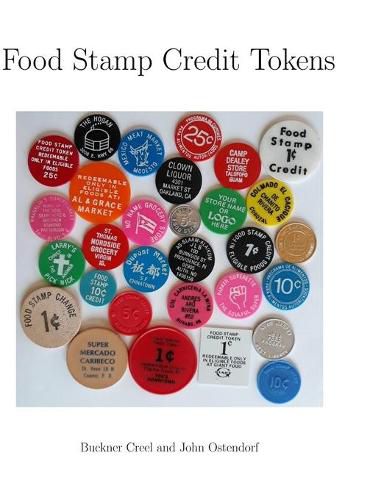Readings Newsletter
Become a Readings Member to make your shopping experience even easier.
Sign in or sign up for free!
You’re not far away from qualifying for FREE standard shipping within Australia
You’ve qualified for FREE standard shipping within Australia
The cart is loading…






This title is printed to order. This book may have been self-published. If so, we cannot guarantee the quality of the content. In the main most books will have gone through the editing process however some may not. We therefore suggest that you be aware of this before ordering this book. If in doubt check either the author or publisher’s details as we are unable to accept any returns unless they are faulty. Please contact us if you have any questions.
Food Stamp Credit Tokens, by Buckner Creel and John Ostendorf, is the first reference book on food stamp credit tokens in about 40 years. This reference book has over 500 pages of information with over 9,500 listings from all 50 states, the District of Columbia, Puerto Rico, Guam, and the U.S. Virgin Islands. Also included is the most information published to date on various manufacturers with photographs of stock reverses, including sub-varieties. Food stamp credit tokens became a necessity during periods in which the U.S. government did not allow merchants to give change for their customers who paid with food stamps. The lowest denomination food stamp was 50 cents (later one dollar), so merchants had to fill the gap in order to provide correct change to their customers. Merchants used various means to provide change such as credit slips, scrip, punch cards, and tokens. Tokens became a popular means to provide change inexpensively while also providing advertising for the merchant. Most food stamp tokens were made of plastic by a few manufacturers that dominated the trade; however, food stamp tokens were also made of aluminum, brass, wood, and fiber. Most food stamp credit tokens were issued in the 1970s; however, this book also discusses and lists food stamp tokens from prior periods of issuance and explores the EBT/SNAP tokens that are issued today, mostly for use in farmers' markets. This book will be a "must own" for any collector serious about food stamp credit tokens.
$9.00 standard shipping within Australia
FREE standard shipping within Australia for orders over $100.00
Express & International shipping calculated at checkout
This title is printed to order. This book may have been self-published. If so, we cannot guarantee the quality of the content. In the main most books will have gone through the editing process however some may not. We therefore suggest that you be aware of this before ordering this book. If in doubt check either the author or publisher’s details as we are unable to accept any returns unless they are faulty. Please contact us if you have any questions.
Food Stamp Credit Tokens, by Buckner Creel and John Ostendorf, is the first reference book on food stamp credit tokens in about 40 years. This reference book has over 500 pages of information with over 9,500 listings from all 50 states, the District of Columbia, Puerto Rico, Guam, and the U.S. Virgin Islands. Also included is the most information published to date on various manufacturers with photographs of stock reverses, including sub-varieties. Food stamp credit tokens became a necessity during periods in which the U.S. government did not allow merchants to give change for their customers who paid with food stamps. The lowest denomination food stamp was 50 cents (later one dollar), so merchants had to fill the gap in order to provide correct change to their customers. Merchants used various means to provide change such as credit slips, scrip, punch cards, and tokens. Tokens became a popular means to provide change inexpensively while also providing advertising for the merchant. Most food stamp tokens were made of plastic by a few manufacturers that dominated the trade; however, food stamp tokens were also made of aluminum, brass, wood, and fiber. Most food stamp credit tokens were issued in the 1970s; however, this book also discusses and lists food stamp tokens from prior periods of issuance and explores the EBT/SNAP tokens that are issued today, mostly for use in farmers' markets. This book will be a "must own" for any collector serious about food stamp credit tokens.